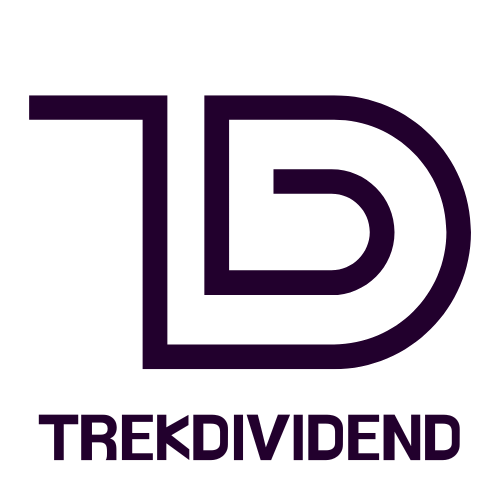In a world where AI is becoming the new best friend, Google’s latest chatbot has everyone buzzing. But what exactly is this digital companion called? If you’ve been scratching your head while trying to figure it out, you’re not alone. With tech giants constantly throwing around names and acronyms, it’s easy to get lost in the digital jungle.
Table of Contents
ToggleOverview Of Google’s AI Initiatives
Google actively engages in numerous AI initiatives, reflecting its commitment to advancing artificial intelligence technology. Among these, Bard stands out as a conversational AI tool designed to compete with other popular chatbots. Bard enables users to engage in natural dialogue and receive informative responses.
Another significant initiative by Google is the development of TensorFlow, an open-source machine learning framework. TensorFlow facilitates AI model training, making it accessible for developers and researchers. Its extensive community support promotes innovation in various AI applications.
Google also emphasizes AI ethics through its AI Principles. These guidelines prioritize fairness, accountability, and transparency in AI systems. By adhering to these principles, Google aims to build trust and ensure responsible use of AI technologies.
Moreover, Google has integrated AI capabilities into its core products. Features like smart replies in Gmail and image recognition in Google Photos showcase practical applications of AI, enhancing user experience.
Further, Google’s Cloud AI services provide businesses with tools for deploying machine learning solutions. These services include pre-trained models and APIs, enabling companies to harness the power of AI without extensive technical expertise.
Investment in AI research has positioned Google at the forefront of innovation. Teams of researchers explore areas such as natural language processing and computer vision, contributing to advancements in AI technology.
Through these initiatives, Google demonstrates its determination to lead in the AI domain, making significant strides that influence various industries.
What Is Google’s ChatGPT Called?

Google’s chatbot enters the scene as Bard. This name reflects its purpose as a conversational AI tool designed to facilitate natural dialogue.
Name and Branding
Bard represents a significant shift in branding for Google’s AI initiatives. The selection of this name aligns with storytelling and creativity, emphasizing its function to engage users in conversation. Marketing efforts focus on clearly distinguishing Bard from competitors like ChatGPT, enhancing user recognition. Branding decisions mirror Google’s broader strategy to humanize technology, making AI more accessible.
Key Features and Capabilities
Bard incorporates advanced natural language processing to understand and respond to user queries. This chatbot excels in generating contextually relevant answers, creating a seamless interaction experience. It integrates well with existing Google services, amplifying its utility without sacrificing user experience. Collaboration with other AI tools enhances Bard’s performance, driving its capabilities further. By focusing on user needs, Bard continually adapts, ensuring it remains a leading choice in conversational AI.
Comparison With Other AI Models
Bard and ChatGPT share many foundational technologies yet display unique characteristics in their design and interaction capabilities. Both rely on advanced natural language processing techniques that allow users to engage with them in conversational formats. Each model aims to generate contextually relevant responses, enhancing user experience through seamless dialogue.
Contrasting with ChatGPT, Bard emphasizes integration with Google services which enhances its practical application. User familiarity with Google’s ecosystem allows for smoother functionality, particularly within platforms like Gmail and Google Assistant. While ChatGPT is praised for conversational depth, Bard seeks to capture thoughtful storytelling and creativity, aligning with its namesake. These distinct approaches reflect varying priorities in the development of AI tools, setting each apart within the competitive landscape of conversational agents.
Applications and Use Cases
Bard finds its applications across various sectors, enhancing interaction through natural language processing. In customer support, it facilitates real-time assistance, allowing businesses to handle inquiries efficiently. Educational institutions leverage Bard to create personalized learning experiences through interactive dialogues.
Healthcare professionals benefit from Bard’s capabilities by employing it for patient communication, simplifying complex health information. Retailers utilize Bard to guide customers through product selections, boosting sales with tailored recommendations.
Bard’s integration with Google services amplifies its utility in everyday tasks. In Google Workspace, for instance, it streamlines workflows by generating content or scheduling meetings based on user prompts. Marketing teams adopt Bard for creating compelling content, enhancing campaign strategies through data-driven insights.
Financial services capitalized on Bard’s features to provide instant answers to customer inquiries, enhancing client engagement. Similarly, developers utilize Bard to assist in coding by generating snippets based on natural language requests, expediting programming processes.
Bard’s adaptability ensures it remains relevant across diverse applications while competing effectively within the AI landscape. Its unique branding emphasizes creativity, encouraging users to engage with technology in more meaningful ways. By addressing user needs, Bard continually evolves, positioning itself as an essential tool for businesses aiming to integrate conversational AI seamlessly.
Google’s Bard represents a significant advancement in conversational AI. By focusing on natural dialogue and seamless integration with existing services, it sets itself apart in a competitive landscape. Its applications across various sectors showcase its versatility and potential to enhance user experiences.
As AI technology continues to evolve, Bard’s innovative approach reflects Google’s commitment to leading the way in ethical and effective AI solutions. This chatbot not only simplifies interactions but also empowers users in diverse fields. The future looks promising for Bard as it adapts and grows, solidifying its role as a vital tool in the world of artificial intelligence.



